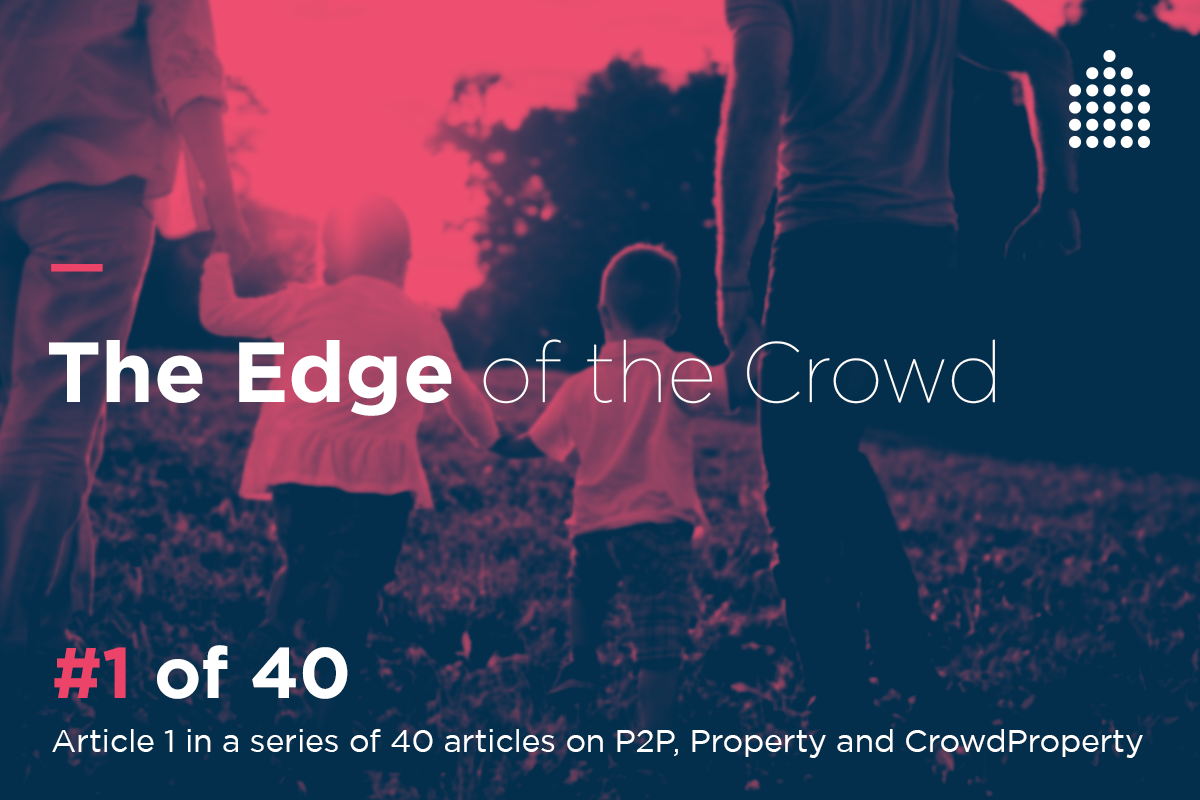Borrow
Case Study
Podcasts
Awards
About
Article 1 in a series of 40 articles on P2P, Property and CrowdProperty
In the first article in our extensive series of articles written to help you navigate the key considerations in P2P, Property and CrowdProperty, we explain why peer-to-peer lending even exists. Next up, we introduce CrowdProperty at the very highest level before digging into important areas of detail in subsequent articles.

Peer-to-peer lending (P2P) – sometimes referred to as crowdfunding – is not quite as old as the century, but has already shown that it’s a compelling proposition for borrowers and lenders alike.
P2P took off in the UK with the launch of Zopa in 2004, offering loans to individuals, and was shortly joined by business lending specialist Funding Circle. While these remain the two best-known operations in the market, the sector mushroomed in the wake of the financial crisis, driven by a combination of banks’ restricting lending – a credit crunch that keeps on crunching for many – and the rapid development of the underlying financial technology that has enabled the efficient matching of lender and borrower, and the tracking of their loans.
“The UK online alternative finance industry market volume grew by 35% year-on-year to reach £6.19 billion in 2017,” according to one authoritative industry report on the last full-year figures – that’s almost ten-fold the £667m in 2013 (P2P grows quicker than its analysts can gather data on it, it seems).
Attractions
While it’s important to note that P2P loans are not equivalent to deposits – they are investments and not covered by the Financial Services Compensation Scheme (FSCS) – P2P firms pay their lenders far more attractive returns than do banks. That is, after all, why lenders use them. So there is a perception that these loans are inherently riskier than those made by banks – P2P picks up those loans that the prudent old bankers won’t touch.
Let’s unpack the reasons why is plain wrong.
A perfectly good rule of thumb says that riskier investments pay out more to compensate investors for the greater chance of loss of capital: you’d expect a higher rate of return investing in Cambodian microfinance than you would by holding UK government bonds. And that’s very valid – up to a point.
P2P is able to provide its lenders with a higher interest payment than banks could, not because the loans are riskier, but because the business model is completely different. That’s also why P2P firms can combine attractive lender rates without eye-watering repayment rates for their borrowers – something unimaginable for a traditional lender.
While high street banks are sprawling behemoths, P2P is a much more specialised proposition. To illustrate this, have a look at the chart below. The figures are from a study done by global consultancy McKinsey, drawn from its comparison of the operating costs of P2P pioneer Lending Club and banks. Although this is a US study, things are very similar over this side of the pond.
Breaking down the numbers
The study breaks down the components of a loan to a small business at 10%. Banks’ fixed costs represent 7% points of the loan. The bank makes a profit of 2% – after all, as we know, their CEOs do not live on the goodwill of their customers alone. That leaves 1% for the investor. Don’t spend that return all in one shop.
Now look at the right-hand bar, representing Lending Club. While platform profits are slightly smaller, at 1.5%, investor returns – at 5.8% – are almost six-fold greater than the banks. Is this because the loan is almost six-times riskier? No, it’s an equivalent loan in every sense – same sector, same sort of business, same risk profile. McKinsey ensured that like-for-like comparison. What’s different is the cost base: 2.7% points for Lending Club.
Unlike the lean operations of P2P lenders, bank overheads cover retail branch networks, with a high-street presence – real estate and staff – expensive to maintain, legacy IT systems, city offices, expensive compliance costs, plus all the other operations and costs that are part and parcel of running a big bank. A specialised lender faces few of these costs.
In short, P2P represents the most efficient matching of supply and demand in the lending market – whether that be to consumer, business or property. It does a far better job at doing what markets are supposed to do – align the interests of buyers and sellers, something that had broken down with banks as intermediaries because… well, because banks have to take too big a slice of the pie in order to survive.
Combining technical innovation with in-depth market knowledge is providing robust solutions: ones that are inherently more efficient for both lenders and borrowers.
Find out more at www.crowdproperty.com
Read more about how investing works at www.crowdproperty.com/lenders
Learn more about our speed, ease, transparency and certainty of finance at www.crowdproperty.com/borrowers













As featured in...



































